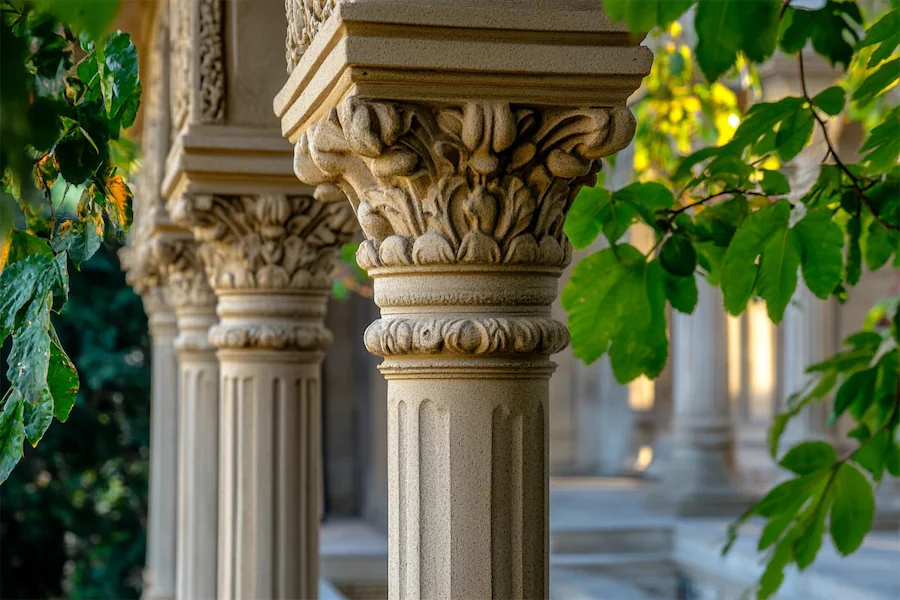Temple-style columns are integral architectural elements that have been employed across various cultures and historical periods, each with distinct characteristics and symbolic meanings.
Introduction to Temple-Style Columns
Columns in temple architecture serve both structural and aesthetic purposes, supporting roofs and entablatures while conveying cultural and religious significance. Their designs vary widely, reflecting the architectural styles and technological advancements of their respective eras.
Greek Temple Columns
Ancient Greek temples prominently featured three classical orders of columns, each with unique attributes:
- Doric Order: Recognized for its simplicity and strength, Doric columns are sturdy with plain capitals and no bases, resting directly on the stylobate. They are typically fluted and have a height-to-width ratio of about 4:1 to 6:1.
- Ionic Order: More slender and elegant, Ionic columns are characterized by scrolled volutes on their capitals and a base beneath the shaft. They often have a height-to-width ratio around 9:1, giving them a more graceful appearance.
- Corinthian Order: The most ornate of the three, Corinthian columns feature elaborate capitals adorned with acanthus leaves and scrolls. They are similar in proportion to Ionic columns but are distinguished by their decorative complexity.
These columns not only provided structural support but also embodied the Greeks’ pursuit of harmony and proportion in architecture.
Indian Temple Columns
In Indian temple architecture, columns are richly carved and serve as both structural supports and narrative devices, depicting stories from mythology and history. The designs vary significantly between regions:
- Northern Style (Nagara): Columns are often intricately decorated with floral patterns, deities, and geometric designs, contributing to the temple’s vertical emphasis.
- Southern Style (Dravidian): Columns, or pillars, are massive and elaborately carved, featuring mythological scenes, animal motifs, and deities, reflecting the grandeur of Dravidian temples.
These columns are integral to the temple’s aesthetics, enhancing the spiritual ambiance and showcasing the craftsmanship of the period.
Egyptian Temple Columns
Egyptian temples utilized columns that were often massive and closely spaced, supporting heavy stone roofs. Common types include:
- Lotus Columns: Featuring capitals resembling lotus buds or flowers, symbolizing creation and the sun.
- Papyrus Columns: With capitals depicting papyrus plants, representing fertility and the Nile.
- Palm Columns: Showcasing palm frond capitals, associated with longevity and victory.
These columns were typically adorned with hieroglyphics and carvings, contributing to the temple’s sacred atmosphere.
Conclusion
Temple-style columns are more than mere architectural elements; they encapsulate the cultural, religious, and artistic values of the civilizations that created them. From the harmonious proportions of Greek columns to the intricate carvings of Indian pillars and the symbolic forms of Egyptian supports, these structures continue to inspire and inform architectural practices worldwide.
